I want to take a moment to spend time with Frida Kahlo. I know, she’s very popular in the West, but I’m very late to her work and even though I’ve been an artist for most of my life, I’ve only had the luxury of taking post secondary art history for two years in my early twenties and we all know what Western art history curriculum covers, European men!
To be honest, it wasn’t until
started writing about Frida and her contemporaries that I took notice. I watched the popular film, Frida and gained a stronger impression of her multi-layered identities, the political climate in which she lived and her visible disabilities.I see Frida’s ability to paint her pain. Her clear and strong voice coming through each canvas depicting her inner world. I’m sure many scholars have written about Frida’s unflinching look at her disability and trauma. She stares at her positionality in life, her bed, and centralizes herself there. Rather than shrinking from her location, she highlights it. She looks straight into the spotlight and turns the viewers eye towards her reality.
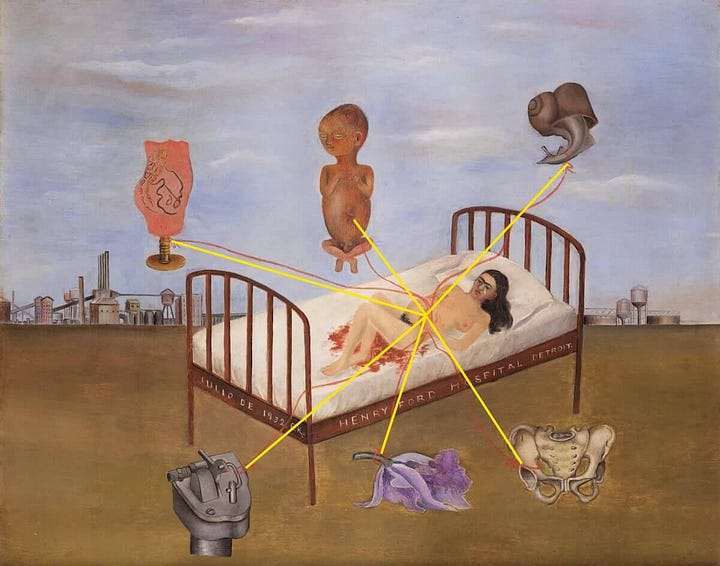

I am not sick. I am broken. But I am happy to be alive as long as I can paint.- Frida Kahlo
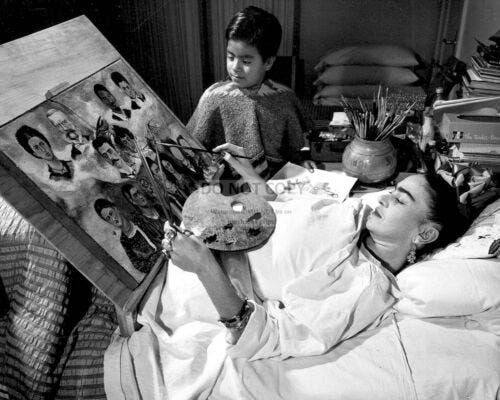
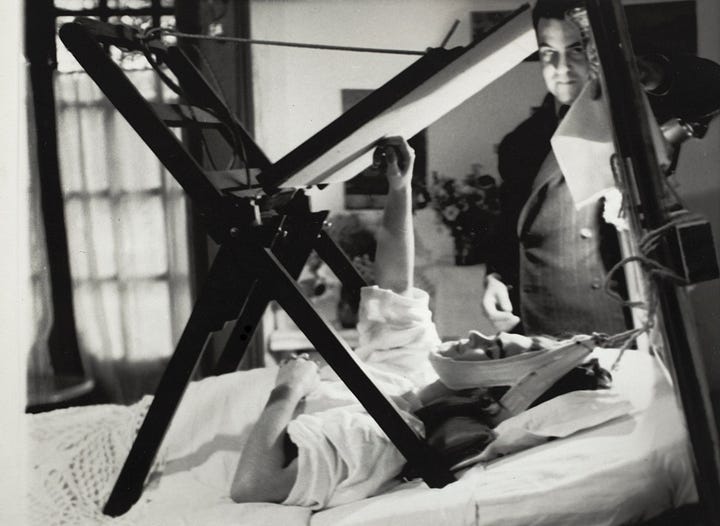
Advised by her doctors that she is too ill to attend the opening reception of her first solo show in Mexico, and that she needs to rest, Frida Kahlo transports her bed to the gallery and attends from there. She greets visitors from her four poster bed, situated in the middle of the Galeria Arte Contemporaneo. - see Wikipedia for more
I absolutely love this part of Frida’s story. In the face of her doctor’s advice, she orders an ambulance and has her bed brought to the gallery. Could I envision myself confined to bed while my first solo exhibit draws near, and find the courage to request my friends and family to relocate my bed to the gallery? Could I imagine welcoming guests from my bed? This feels revolutionary to me, but it shouldn’t.
In our colonized, ableist society, we absorb the belief that life looses its value if it involves enduring pain. But Frida pushes hard against that.
Yes, life with pain is difficult. Yes, there is immense suffering and loss and grief. But is it worth living? Yes! Is it worth painting? Of course! Why is society so quick to give up? Why so willing to let people die in isolation when they have so much living to do?
In Lindsay Baker’s feature in BBC, Unlocking the Hidden Life of Frida Kahlo she says,
Kahlo’s personal style was in part guided by her disabilities. “Clothes became part of her armour, to deflect, conceal and distract from her injuries,” says Henestrosa. “Kahlo endured multiple operations in both Mexico and the United States and had to wear orthopaedic corsets made of leather and plaster. Her corsets were necessary for medical reasons but she also elaborately decorated them. The traditional indigenous dress style she adopted allowed her to conceal these items under long skirts and geometric cut blouses.”
Here we read that Frida’s creative and culturally radical attire was used to deflect and conceal. I can’t ask her if she had shame about her deformities. I can’t ask her what she would have done if she couldn’t afford these statement pieces. Intersections of wealth come and disguise parts of herself. We see through her many self-portraits some of the under-layers to her performance. We see the betrayal and recoiling under the weight of suffering.
As I am not a historian, I can not claim any authority on the context to which she was working and living. But as a woman, I can say that her bold, unapologetic transparency feels like a call to own myself in similar ways. I feel called to author my own story through paint and words with clarity and fearlessness.
Nichola Daunton writes about Frida’s disabilities and various marginalized identities in this piece, Disabled icons: painter Frida Kahlo and pushing boundaries. Here, Nichola says we need to take note of her work before claiming her as an icon or hero to a cause. I agree. It would minimize her humanity to put her on a pedestal of altruism. Like all humans, Frida was selfish at times, hurtful, potentially even manipulative as Nichola hints at. But to me that is neither here nor there. I still claim her in the family of artists with disablities. I celebrate the moments when she was able to show her disablity and not hide from it. I also celebrate when she chose to hide her prosthetic leg or leather corset under long cultural dresses. However she chose to show up in this world is valid.
I don’t have a visible disability or some way of showing that I am in constant pain and have been for over ten years. There is a double edge to that. I feel safe not being seen through the lense of disability and all the pity or distancing that that causes. But I also feel less safe. I want to be seen in my wholeness. I need to be seen and acknowledged and not abandoned. But this takes courage on my part. If I continue to hide these parts, I become a walking shadow of myself. Collecting all our self pieces and holding them together in our hands is wonder and magic and pure love.
Do we paint and write our pain as artists? Do we dance our pain? Do we act our pain? Do we role play and perform and sing our pain? I believe we do. I believe this is the gift of creativity. It is an outlet for us to find our voice in the suffering. It can bring us into the depths of that sorrow and then carry us forward. Creative expression is an adaptive tool at our disposal. It is an extension of self-compassion. It nurtures and feeds a broken heart. It breathes new life into complex, confusing thoughts. It is elusive and fleeting but also tangible and real.
Continue with me on this exploration into artists with disabilities! I am looking at Maud Lewis next! Do you have an artist you look to as a role model? Do you see yourself in other prominent voices? Do you need to see yourself?





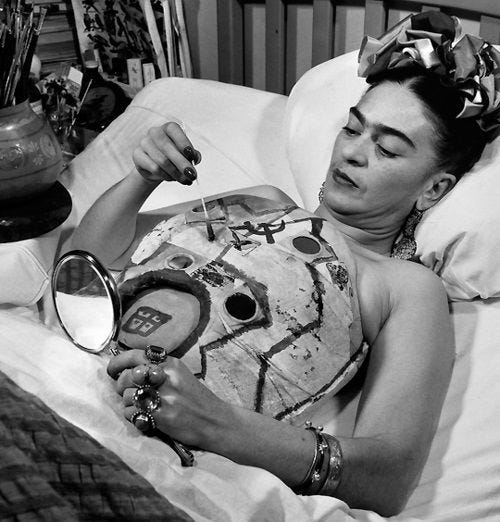
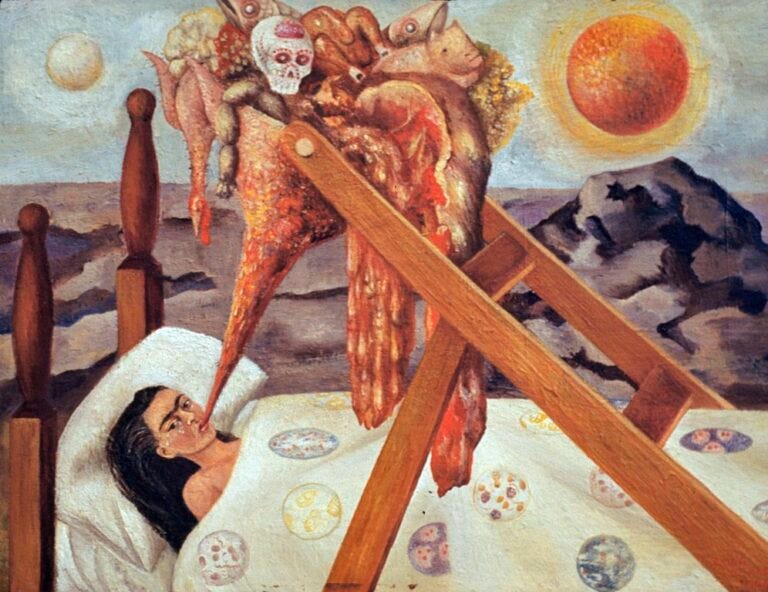
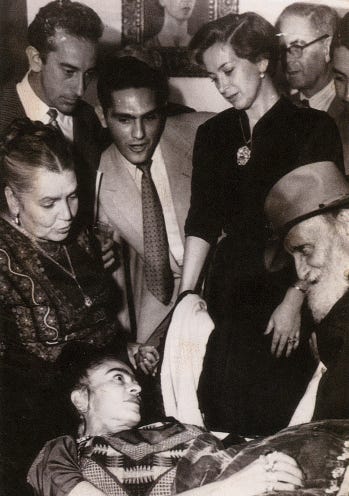


Another post to really make me think. I hide the parts if me that hurt in many ways and I am only just realising this. Thank you Maria.
If you don't already follow the work here of Madelleine Muller who writes The Bed Perspective, you may also find it inspiring. <3 <3